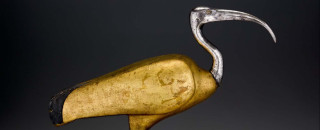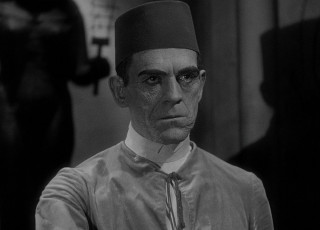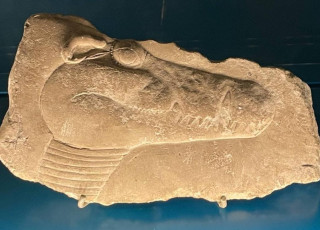When Mummification Was For the Birds
Ibis coffin from Ancient Egypt containing mummified Ibis. Credit: Charles Edwin Wilbour Fund - Brooklyn Museum
By Riley Black
"Mummification was a fundamental aspect of Egyptian religion," says Westminster College Egyptologist Alicia Cunningham-Bryant, the first speaker in NHMU's Stories From Egypt series. Far from the Westernized horror movie tropes and our modern fascination with the macabre - which came after the excavation of King Tutankhamun's tomb in 1922 — the process was an intimate, important, and delicate preparation for the afterlife. And not only was the practice important for people of various backgrounds and social classes, but animals were mummified, too.
The mummification process did not only include physical preparations, but, within Egyptian religion, required knowledge of the right spells to use during the process. "Without proper burial and the correct knowledge," Cunningham-Bryant says, "people could be stuck in some very unpleasant situations." One particular recitation, she notes, was meant to prevent the deceased from being stuck upside down in the afterlife. Both in terms of physical procedures and words, preparing someone's bodily vessel for the afterlife was a critical process.

The same care was taken with animals, from cats to crocodiles. Ancient Egyptians worshipped deities that often recombined or transcended the categories of human and animal, after all, like the crocodile god Sobek or the cat god Bastet. More than that, archaeologists have found thousands and thousands of mummified animals in necropoli - or cemetaries - created in the days of ancient Egypt. Some time periods created more animal mummies than others. "The production of vast quanities of animal mummies reached its peak in the later periods of ancient Egypt, such as at the necropolis at Tuna al-Gebel with the temple to Osiris Babboon and Oriris Ibis," Cunningham-Bryant says. Over 15,000 mummified birds - from ibis to vultures - have been found there. The mummification of these birds carried special significant. The birds were representations of the gods, Cunningham-Bryant notes, and so people paid to embalm the birds and bury them in a ceremony that invoked the god Horus burying his father Osiris as avian imagery was important to both deities.
It's not just the mummies themselves that speak to us about these important rituals, though. Egyptologist Sofie Schiǿt published a translation of a mummification handbook, Cunningham-Bryant notes, and many other archaeologists have extensively studied the written and cultural records of the practice. All that information inspired Cunningham-Bryant, who was looking for a new way to engage students, and so she drew from the available records to try mummifying a bird herself. "Honestly, the first time I did it I was crossing my fingers it would work," she says, "but it went really well." Replicating the practice isn't just a matter of replaying history, but underscores how precious a process mummification really was. By trying mummification at home, Cunningham-Bryant says, you can see "the time, effort, and ingenuity that ancient Egyptians brought to burial practices."
See Alicia Cunningham-Bryant speak as part of our Stories from Egypt series.
Riley Black is the author of Skeleton Keys, My Beloved Brontosaurus, Prehistoric Predators, and a science writer for the Natural History Museum of Utah, a part of the University of Utah in Salt Lake City. Our mission is to illuminate the natural world and the place of humans within it. In addition to housing outstanding exhibits for the public, NHMU is a research museum. Learn more.



